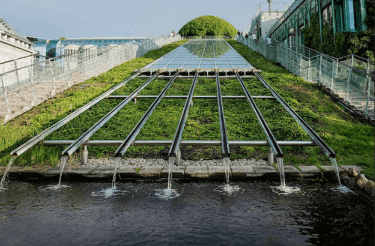Question
a.
Reduces the time of exposure for heat penetration
b.
Successful canning of low acid foods in large containers
c.
Higher temperatures May be used with lesser danger of cooking
d.
All of the mentioned
Posted under Food Engineering
Interact with the Community - Share Your Thoughts
Uncertain About the Answer? Seek Clarification Here.
Understand the Explanation? Include it Here.
Q. Advantage of agitation _____
Similar Questions
Explore Relevant Multiple Choice Questions (MCQs)
Q. Disadvantage of agitation _____
View solution
Q. Which of the following is true about end-over-end rotation?
View solution
Q. Which of the following step is included in food canning by sterilization, which is considered the ideal method for food canning?
View solution
Q. Statement 1: Denaturation of proteins is followed by coagulation and then flocculation.
Statement 2: Oxidative rancidity is accelerated by heat, metallic ions and light.
View solution
Q. Which is true about fats heated in the presence of oxygen?
View solution
Q. Flavor reversion occurs in saturated fats and oils.
View solution
Q. Statement 1: Sugar and starches are degraded by prolonged heating.
Statement 2: Acid foods retain a higher percentage of thiamine during caning preservation.
View solution
Q. The destruction of vitamin ascorbic acid is accelerated due to which of the following reasons?
View solution
Q. Statement 1: Glass packed foods may lose riboflavin more than tinned foods. It is a water soluble vitamin.
Statement 2: Ascorbic acid is destroyed by heating at low temperatures for a long time.
View solution
Q. Which of the following fat soluble vitamins are stable in absence of oxygen and when they aren’t heated?
View solution
Q. Which of the following is true about ptomaine?
View solution
Q. Which of the following is untrue about ptomaine?
View solution
Q. Which of the following is a notion about open canned food?
View solution
Q. Rusting is due to sweating of containers when moisture from air condenses on cans when their temperature is below the dew point of the air.
View solution
Q. Which of the following step is NOT included in the commercial canning?
View solution
Q. Statement 1: Caramelization is a process resulting from heating polyhydroxycarbonyl compounds.
Statement 2: Oxidative browning may occur in foods heated in the presence of oxygen.
View solution
Q. HTST exposures to heat are less destructive to texture, flavor and color of food than LTLT exposure.
View solution
Q. Statement 1: During denaturation of proteins, the viscosity increases and there is an increase in sulfhydryl groups.
Statement 2: Heat impairs the nutritive value of protein.
View solution
Q. Evaporation, desiccation and dehydration all mean the same thing.
View solution
Q. Statement 1: Dried foods from a dehydration unit have better quality than sun dried components.
Statement 2: The color of dehydrated food under optimum conditions is superior to that by sun drying.
View solution
Recommended Subjects
Are you eager to expand your knowledge beyond Food Engineering? We've handpicked a range of related categories that you might find intriguing.
Click on the categories below to discover a wealth of MCQs and enrich your understanding of various subjects. Happy exploring!








